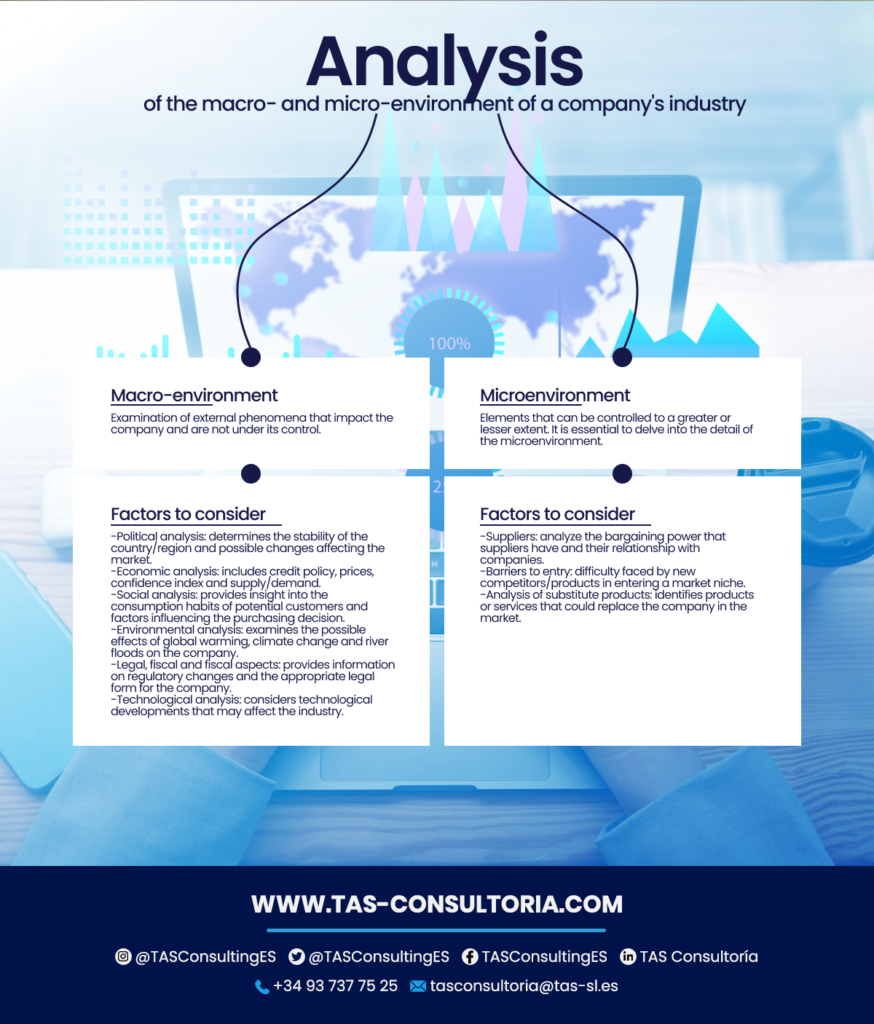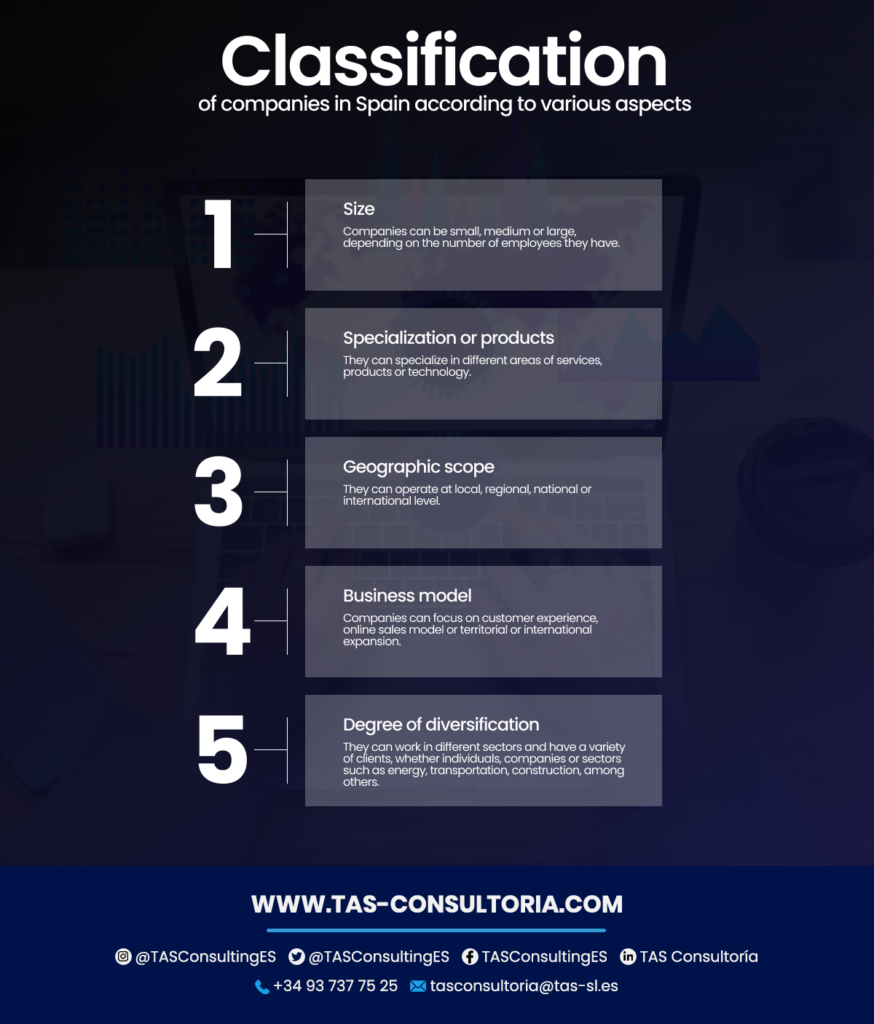
In today’s business world, the company’s sector in which a company operates can be a determining factor in its success or failure. For this reason, conducting an industry analysis is crucial for any project you want to undertake. In this article, we offer you the key tips to approach the sector of a company successfully and its importance. If you want to know more about how to achieve success in your business, read on!
First step: pre-assessment. What is involved in analyzing a company’s industry?
Analyzing a company’s industry involves a detailed assessment of the internal and external factors that affect its performance. First, the economic and political environment in which your company operates is an important factor to consider. This includes competition, government regulation, changes in market demand, among others.
Second, the analysis of a company’s industry also involves an assessment of the company’s resources and capabilities in comparison with its competitors. This may include assessing the quality of its products or services, the efficiency of its processes and the level of knowledge and skills of its personnel.
Also, networking is crucial. Contacts are a key part of entering a business sector. It is important to establish relationships with key people in the industry, as they can provide valuable information and open doors to business opportunities.
Thirdly, the analysis of a company’s sector focuses on identifying the opportunities and threats that the company faces in the market. This will provide insight into the environment in which the business will operate, the competitors it will face and the conditions under which it will compete.
In this way, the company will be able to determine its strategy and how to face the competition in its market.
You may also be interested in: What is ROA and how to calculate it?
Step 2: In-depth assessment: What is the process for conducting a business sector analysis?
In order to carry out a complete analysis of a company’s sector, it is necessary to address two main aspects: the macro-environment and the micro-environment. Below, we will detail what each of them is about:

Analysis of the macro-environment of a company’s sector
It involves examining external phenomena that impact the company and are not under its control. To do this, reconsider the following factors:
- Conducting a political analysis will help determine whether the stability of the country or region will be favorable for the market in the coming years and whether there is any possibility of a change that will affect the market.
- The economic analysis of a company’s sector, on the other hand, covers credit policy, prices, the confidence index and the relationship between supply and demand. With it, it is possible to know the state of the national or regional economy in relation to the corresponding sector.
- Social analysis is very important, as it provides insight into the consumption habits of potential customers and, therefore, allows us to determine which factors may influence the purchase decision.
- Environmental aspects of a company’s industry such as global warming, climate change and river flooding can have a significant impact on your business. Therefore, it is important to conduct a detailed environmental analysis to understand their potential effects on your business.
- It is also essential to be aware of the legal, fiscal and legal peculiarities of a company’s industry if you want to operate effectively. Knowing these aspects can provide you with valuable information about possible regulatory changes and the most appropriate legal form for your company in a given field.
- Finally, the technological analysis must take into account new developments that may affect the sector, even in the most traditional sectors, where technology plays an important role. Knowing the technological trends becomes an obligation to be up to date in the market.
Analysis of the micro-environment of a company’s sector
In order to be able to analyze a company’s sector in a complete manner, it is necessary to take into account both the macro-environment and the micro-environment. Thus, the micro-environment is made up of elements that can be controlled to varying degrees by the company, so it is essential to delve into its detail in order to be able to make appropriate decisions.
In that sense, take into account these aspects:
- It is important to know the suppliers in a company’s industry, as this model also analyzes the bargaining power they have when interacting with different businesses.
Generally, the advantage is on the side with the most options to choose from and the one that loses the least if the relationship between the company and the supplier comes to an end.
- Another important force in analyzing a company’s industry is the existence of barriers to entry, which refers to the difficulty faced by new competitors or products in entering a market niche. The more difficult it is for them, the more protected the company will be.
- Substitute product analysis is also crucial to identify products or services that could replace you in the market. In reality, almost all products and services are substitutable, so it is essential to know your competitors’ offerings and their characteristics.
You may also be interested in: How is investment risk measured?
Third step: classify and select potential customers for your business strategy
In order to develop a commercial strategy, it is important to classify and select potential customers in a company’s sector. In Spain, companies can be classified in various ways, such as the following:

It should be noted that these classifications are general and each company may have unique characteristics that differentiate it from others. In addition, there are other ways of classifying companies in Spain, such as:
- They can adopt different legal forms, such as corporations, limited liability companies, cooperative societies and other options.
- They can also be new or have decades of experience in the market.
- Finally, companies can be classified by their management model, either by their owners or by having an independent management team, as well as having a family management culture.
You may also be interested in: Frequent mistakes when setting business goals
Addressing a company’s industry is critical to business success in any country. We have shared with you key tips for conducting an industry analysis and gaining an in-depth understanding of the environment in which your company operates.
In our group of experts, we have a team of highly trained professionals who will provide you with advice in all areas of your business and in the analysis of a company’s sector. Contact us today and start building your path to business success in Spain!




Your email address will not be published .
Required fields are marked with *